Best Video Cards: May 2014
by Ryan Smith on May 29, 2014 1:00 PM EST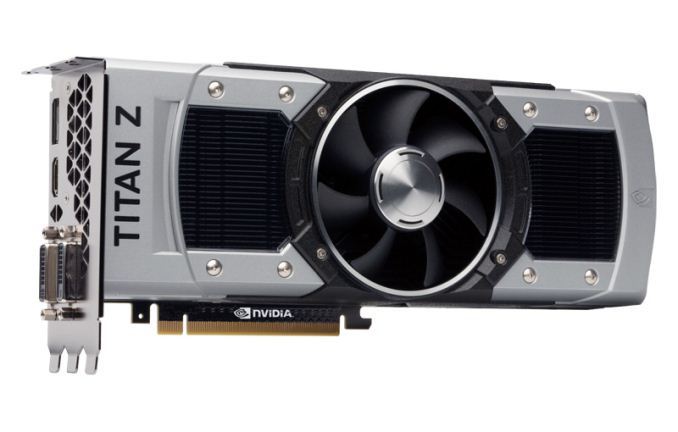
We’re back once again with our monthly guide to video cards and video card industry recap, this time for May of 2014.
All things considered, the month of May has been extremely quiet in the land of video cards, even more so than April was. There have been no major product announcements from either NVIDIA or AMD this month – not that we were expecting any – so the video card market hasn’t shifted very much this month compared to the bigger shake-ups of earlier this year.
The biggest change for the month of May is of course yesterday’s launch of NVIDIA’s GeForce GTX Titan Z. NVIDIA’s dual-GPU flagship was originally scheduled for release in April but was held back to this month, leaving a two month gap between announcement and release. The GTX Titan Z is NVIDIA’s most powerful card yet, packing a pair of GK110 GPUs and all functionality/features that have come to define the Titan family, including uncapped (1/3rd rate) double precision performance and 6GB of VRAM per GPU. However at a price tag of $3000 it’s twice the price of AMD’s dual-GPU R9 295X2 and NVIDIA’s more conservative power consumption and clockspeeds means that they face an uphill battle when it comes to performance. Consequently the GTX Titan Z is being treated as more a compute card than a gaming card by NVIDIA, though if money is no object then it can certainly be used as a gaming card and should turn in some impressive numbers.
The launch of the GTX Titan Z also coincides with the first WHQL release of NVIIDA’s R337 drivers, 337.88. R337 is a performance optimization heavy driver branch for NVIIDA, incorporating a number of smaller optimizations with an apparent focus on cutting down on CPU driver overhead. 337.88 also includes support for the new generation of single tile (SST) 4K monitors, which will eventually render the existing multiple tile (MST) 4K monitors obsolete.
Meanwhile in the AMD camp, AMD engaged in a small amount of price shuffling among their product lineup. The Radeon R9 280, AMD’s 200 series analogue to the venerable 7950, received a price cut from $279 to $249. This is in reflection of the fact that the R9 280X has been back to its MSRP for several weeks now, and as such the R9 280 was overpriced for the performance it delivered. At $249 it’s now much more competitive against AMD’s other cards while capable of putting the squeeze on NVIDIA’s GeForce GTX 760.
And not to be outdone on the driver front, AMD had their own major driver release this month with the release of the Catalyst 14.6 betas. These drivers overhaul AMD’s Eyefinity functionality, incorporating support for new modes that can be used with mixed resolution monitors. AMD can’t work magic, but between the new Fit and Expand modes they have greatly increased the usability of Eyefintiy with disparate monitors, making it possible to work with Eyefinity when mixing old and new monitors, cheap and expensive monitors, etc.
Anyhow, market summaries behind us, let’s look at individual recommendations. As always, we’ve laid out our ideas of price/performance bands and recommendations in our table below, with our full explanations and alternative options to follow. As always, in the case of the sub-$200 market it’s worth pointing out that there’s a video card for roughly every $10, so picking a good video card is as much about budgets as it is finding an especially strong card.
| May 2014 GPU Performance Guide | ||||
| Performance Band | Price Range | Recommendation | ||
| 1080p (Low) | $99-$149 | AMD Radeon R7 250X | ||
| 1080p (Med) |
$149-$199
|
|||
| 1080p (High) |
$199-$289
|
|||
| 1440p (Med) |
$289-$399
|
|||
| 1440p (High) |
$399-$649
|
|||
| 1440p (Max) |
$649+
|
|||
| 4K/Multi-Monitor (High) |
$1000+
|
|||
As a general recommendation for gaming, we suggest starting at $99. There are cards below this price, but the amount of performance you have to give up below $99 far outweighs the cost. Even then, performance gains will generally exceed the price increases up to $150 or so.
Meanwhile for gamers looking for high quality 1080p gaming or better, that will start at $199. Going above that will find cards that are good for 1440p, 4K, and multi-monitor, while going below that will find cards that will require some quality sacrifices to stay at 1080p.
Finally, this guide is by its very nature weighted towards price/performance, based on the passionate feedback we've received from our readers. For these purposes we consider AMD and NVIDIA to be equal from a functionality and compatibility perspective, but it should be said that both parties have been building out their ecosystem in the past year, and this will only continue to grow as the two companies try to differentiate themselves. So if you need or want functionality beyond the core functionality a video card offers, it may be worthwhile to familiarize yourself with the NVIDIA and AMD ecosystems, including Gameworks, Eyefinity, Mantle, GeForce Experience, and more.
Budget (<$100): AMD Radeon R7 250X
At $99 there is no other card even worth considering besides AMD’s Radeon R7 250X. NVIDIA’s closest cards remain more expensive for the performance, so compared to both NVIDIA and AMD’s lineups the R7 250X will outperform any AMD or NVIDIA card at similar prices, making it the fastest thing at this price.
From a performance perspective the R7 250X isn’t going to quite hit the sweet spot we outlined earlier, but for those gamers on a strict budget it will get the job done. In the long run it should be able to run most games even at 1080p with medium-to-low settings, along with keeping texture quality down a notch to account for its 1GB of VRAM. Battlefield, GRID 2, and even Total War: Rome 2 can easily hum along on this card at decent settings at 1080p.
Mainstream Sweet Spot ($149): AMD Radeon R7 265
Among the crowded $149 market our primary recommendation is the Radeon R7 265, AMD’s recently launched Pitcairn card designed to lock in this price point. Essentially a 7850 with a higher GPU clockspeed and a revised memory bus allowing for higher memory clockspeeds, the R7 265 a very capable card for the price.
From a performance standpoint the R7 265 not going to be able to play every game at 1080p at high settings, but it will be fast enough for medium-to-high depending on the game, which will be a couple of notches higher than what the $99 cards can do. Meanwhile the 2GB of VRAM will mean that future games shouldn’t bog down the card quite as badly; higher graphical fidelity games will slow it down like any other card, but there’s enough VRAM to keep up with the demands of higher resolution textures and heavier use of intermediate buffers.
Runner Up: NVIDIA GeForce GTX 750 Ti
Since our guide is written on the assumption that most buyers are looking for the best performance at a given price, our performance recommendations are going to favor AMD, as they’re more willing to throw out larger, more powerful cards at these sub-$200 price bands. NVIDIA on the other hand isn’t going to be able to directly compete with AMD on price/performance, but they do have an interesting technological advantage for gamers who are looking for a different set of tradeoffs.
Powered by NVIDIA's Maxwell architecture, at a price these days closer to $139 NVIDIA is able to offer the GeForce GTX 750 Ti, a card that offers performance approaching the R7 265 with much lower power consumption. The GTX 750 Ti is a sub-75W card – no external PCIe power connector required – allowing it to work in cases and systems where the near-150W R7 265 cannot, while also offering the improved acoustics that come with lower power consumption. So for OEM upgrades, or buyers just looking for something even quieter, the GTX 750 Ti is an interesting alternative. Just keep in mind that from a performance standpoint it trails the R7 265 by about 16%.
There are also a pair of options between here and the R7 250X that bear mentioning. The R7 260X resides at $119 and goes up against the GTX 750, with AMD holding a performance advantage similar to R7 265 vs. GTX 750 Ti. We’re fans of stepping up to the greater performance of the $149 cards, but it does offer something between $99 and $149.
1080p Gaming ($199): AMD Radeon R9 270X
Moving up our product lists, at $199 we’re finally up to cards that are fast enough to play most games at 1080p with high-to-ultra settings. More powerful/expensive cards will offer a further edge for the most demanding games, along with offering a bit more longevity, but for most games at the extremely common resolution of 1080p, it only takes $209 to hit a great level of graphical fidelity for that resolution.
To that end there is no better card at this price than AMD’s Radeon R9 270X. Based on a fully enabled Pitcairn GPU, 270X easily offers the most bang for the buck, keeping its distance from NVIDIA’s GTX 660 while getting rather close to NVIDIA’s more expensive GeForce GTX 760.
Runner Up: NVIDIA GeForce GTX 760: The GeForce GTX 760 offers a small but respectable performance lead over the Radeon R9 270X. On a pure price/performance basis it doesn’t make sense, and at $239 sits in an odd gap between the $199 270X and the more capable $300 cards, but for buyers looking for an NVIDIA option for 1080p gaming around $199, it’s as close as one can get.
Reaching For 1440p ($289): AMD Radeon R9 280X
Based on AMD’s venerable Tahiti GPU, the Radeon R9 280X offers the performance of the Radeon HD 7970 at around half the launch price of the aforementioned card. Since coming back down to its MSRP the 280X has continued to fall in price some, and lower-end cards can now regularly be found on sale for less than $299.
For the 280X we’re looking at a card that will straddle 1080p and 1440p. It’s not quite fast enough to work in every game at 1440p with high quality settings, but it’s fast enough for many of them. Alternatively, it’s fast enough at 1080p that it has no problem at that resolution with everything cranked up, including high levels of MSAA and even SSAA in some games. Plus the 3GB of VRAM will give it some leg room if future games demand more VRAM.
On a competitive basis the R9 280X performs very similarly to NVIDIA’s GeForce GTX 770, generally trailing by a few percent. However with AMD making the conscientious decision to undercut NVIDIA on pricing here, it gets our nod for this bracket.
Runner Up: NVIDIA GeForce GTX 770
NVIDIA’s counterpart to the R9 280X is the GeForce GTX 770. With the cheaper GTX 770 cards now available for around $319 it still holds a price premium over AMD, but less than it once was. The GTX 770 is ever so slightly faster than the 280X – leading by a few percent on average – which generally isn’t enough to offset the price difference, but it goes without saying that it leaves the two cards close. The GTX 770 is a perfectly practical alternative to the 280X in this case, trading a slightly higher price tag for entry into NVIDIA’s ecosystem, something that may become more important as G-Sync monitors are scheduled to become available next month.
Extreme Performance for Cheap ($399): AMD Radeon R9 290
For gamers who want to top-tier performance without completely breaking the bank, AMD’s Radeon R9 290 is easily going to be the card of choice. Offering performance that rivals the more expensive R9 290X and GeForce GTX 780, the 290 is unparalleled in performance for its price. At this level of performance it should be able to run virtually anything at 1440p with high-to-extreme settings, and 1080p gamers should have no trouble hitting 120fps in anything that isn’t CPU limited to begin with.
As the vast majority of reference-style cards have gone out of circulation by now, there is thankfully a good selection of superior semi-custom and fully-custom cards at $399 (and sometimes on sale for even less). These cards offer all of the fantastic performance of the 290 without the noise or throttling drawbacks of the reference 290. Just keep in mind that all of these cards will be open air cooled cards that will want a case environment that can dissipate the additional 250W-300W of heat.
Extreme Performance with Refinement ($499): NVIDIA GeForce GTX 780
Positioned as NVIDIA’s lowest tier GK110 card, the high performance offered by the GeForce GTX 780 means it should be fast enough to run virtually anything at 1440p with high-to-extreme settings, and 1080p gamers should have no trouble hitting 120fps in anything that isn’t CPU limited to begin with. To that end the GTX 780 is the cheapest card that can drive all sub-4K single-monitor setups, giving it a sweet spot position of its own in the current market.
As an added bonus, even at the $499 base price this gets access to NVIDIA’s impressive metal shrouded blower, which in our tests is enough to keep noise levels under 50dB. So for gamers looking for a balance between performance, cooling effectiveness, and noise, the GTX 780 is a star. Meanwhile for gamers looking at open air coolers, GTX 780 cards with alternative coolers such as EVGA’s ACX cooler will find that the GTX 780 can be even quieter for the usual tradeoff between a blower and an open air cooler.
Runner Up: Radeon R9 290X
With prices on the R9 290X falling as low as $499 these days, the 290X has shifted over to being direct competition for the GTX 780. Like the R9 290 the supply of reference cards is nearly gone, so everything from top to bottom is an acoustically superior semi/fully-custom open air cooled card. Looking primarily at the cheapest cards – what are essentially near-reference in clockspeeds and features – the R9 290X puts up a good fight with the GTX 780, capable of edging it out at the same retail price. The only issue the 290X faces is that the 290 is so close in performance that it doesn’t have much of a lead here, making it harder to stand apart from the 290 and the GTX 780.
Taking the Single-GPU Crown For Gaming ($649): NVIDIA GeForce GTX 780 Ti
For the fastest single-GPU card on the market for gamers, NVIDIA’s top tier GK110 part, GeForce GTX 780 Ti, stands alone. The performance advantage over the Radeon R9 290X (or even the 290 for that matter) is not incredible, but there’s admittedly nothing new about paying a notable price premium for the very best card.
4K for Me ($1000+): 2x AMD Radeon R9 290X
Though the Radeon R9 290X doesn’t make a ton of sense on its own in light of competition from the GTX 780 and R9 290, if we want to move into 4K gaming and the extreme load it presents, a pair of 290Xs becomes a very tantalizing option. Thanks to AMD’s XDMA engine the 290X has no problem scaling up to 4K in Crossfire, taking AMD’s decent single-card 4K performance and scaling it up to something that allows for 4K without the quality compromises. Considering 60Hz 4K monitors still run for $800+ and demand incredible GPU performance to drive them, to get the most of of such a monitor it doesn't make sense to pair it up with anything less than a pair of 290Xs.
Of course the Radeon R9 295X2 deserves a mention here. As we discussed in our recap of April, AMD’s recently launched dual-GPU flagship card offers all of the performance of the 290X in Crossfire with much better acoustics and in a smaller package. Since our guide is based first and foremost on price/performance our primary recommendation for this bracket is going to be the 290X CF, but if you can make the steep climb to $1500 the 295X2 and its liquid cooler is a very impressive product whose vastly improved acoustics make 295X2 a superior option to 290X CF.
Meanwhile the GTX 780 Ti in SLI is also going to be a viable alternative here. From a performance perspective it will trail the AMD setups by 5% or so at 4K, so while it can’t match the AMD setups hit-for-hit it doesn’t significantly fall behind, making it practical to get similar performance in the NVIDIA ecosystem. The catch is that at $1300 for the dual card setup it’s closer to the 295X2 than the 290X CF in price, so it doesn’t have a distinct sweet spot on price or acoustics like either AMD configuration. But unlike either AMD option, the GTX 780 Ti is available in a high quality blower configuration, allowing a 3rd option between the widely spaced open air cards of R9 290X and the unconventional CLLC of the R9 295X2.


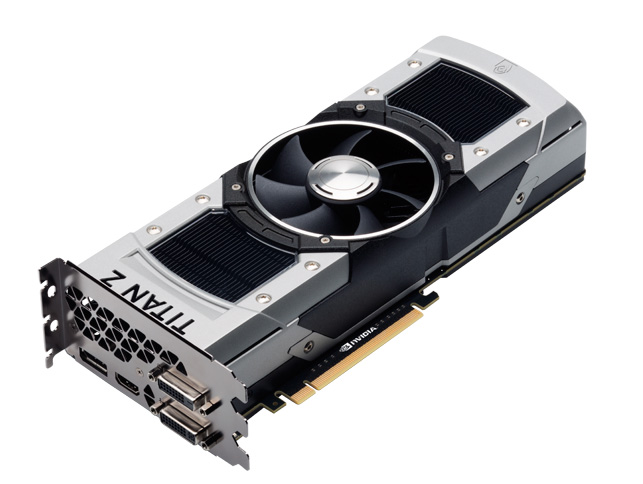
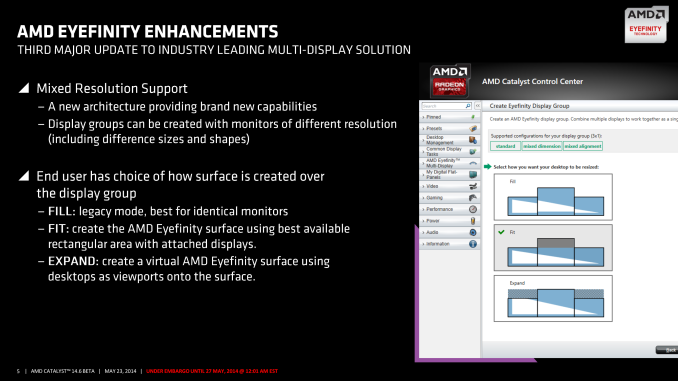
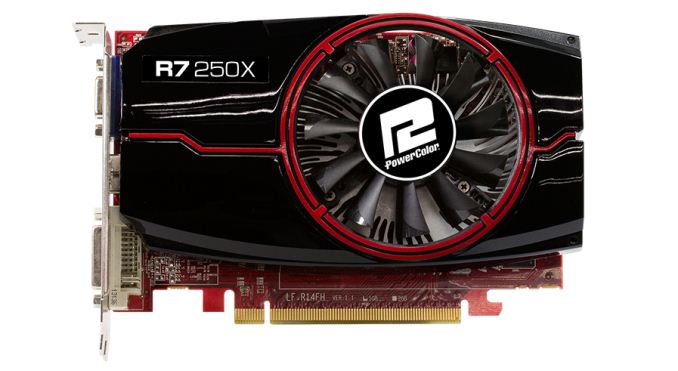
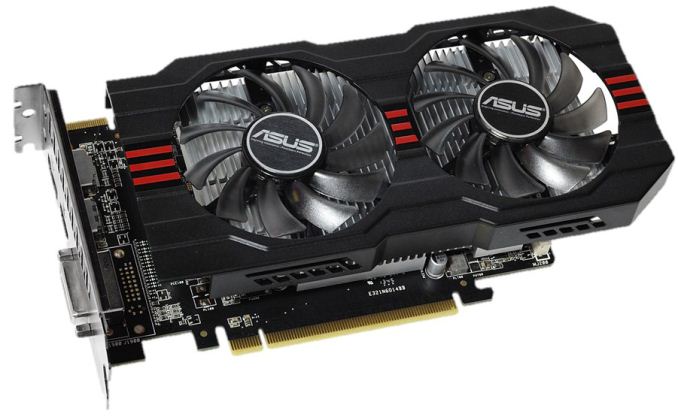

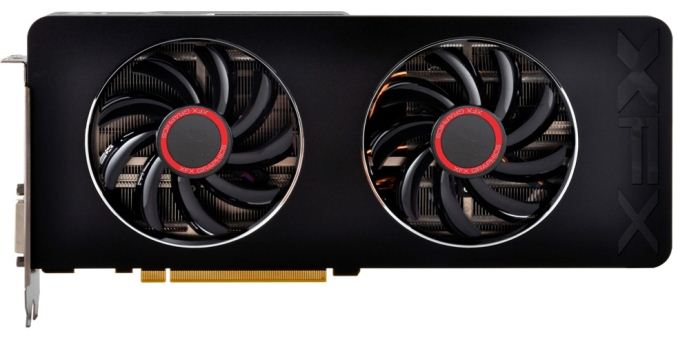
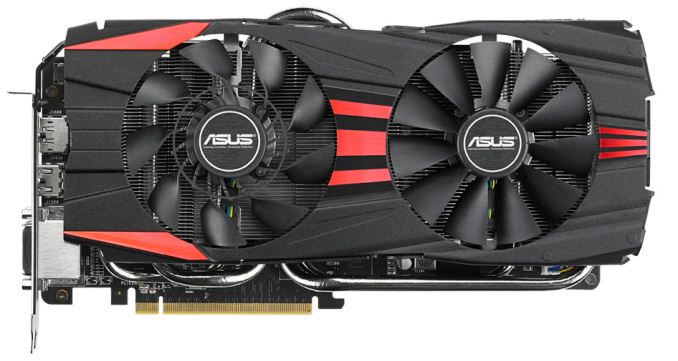
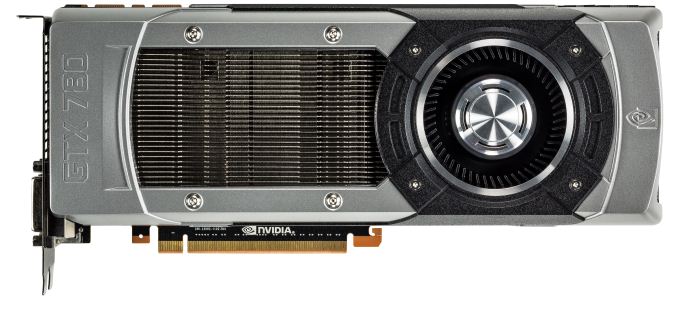
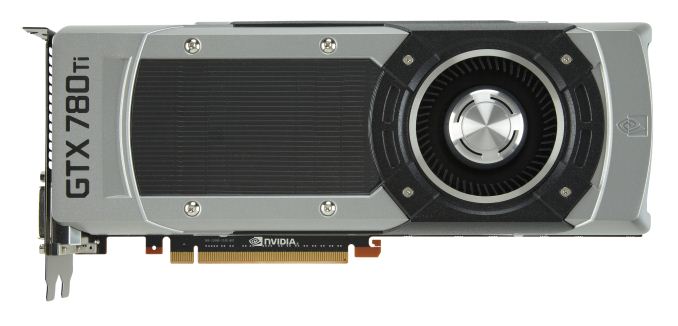









44 Comments
View All Comments
Anonymous Blowhard - Thursday, May 29, 2014 - link
You mean "For Cheaper" right?http://www.newegg.com/Product/Product.aspx?Item=N8...
PowerColor AXR7 260X 1GBD5-DH/OC Radeon R7 260X - $70 after MIR with free shipping.
nathanddrews - Thursday, May 29, 2014 - link
Wow, that's a phenomenal price. At that price, 260X CF actually makes sense.nathanddrews - Thursday, May 29, 2014 - link
Nevermind... 1GB is pretty weak. If it were 2GB, then for sure.trichome333 - Wednesday, June 4, 2014 - link
Great find! Anyone on the fence about needing a discreet GPU should jump all over that! Just paid 199 after MIR on an r280...... wonder what 260x in CF does? lol Im sure 280 would smoke it. Right????Ryan Smith - Thursday, May 29, 2014 - link
These guides are generally based on the prices/availability of the lowest quartile of cards. We do not draw recommendations from a single card that is on sale, as sales are fleeting.Plus the card you speak of is a 1GB card.
coburn_c - Thursday, May 29, 2014 - link
The 99 dollar 250X is 1GB as well, and the range is 99-150, which includes 260x 2GB models at the same price as the 250X 2GB model. Just a bad recommendation when you consider for 10 dollars more, any way you toss them, the 260X has 1/3 more shaders.Ryan Smith - Thursday, May 29, 2014 - link
$99 is something of a hard price point. Cards above it are far better, and it has been that way for years. But sales data shows that $99 (and $199) are hard price points; certain groups of consumers will stick to a strict budget and not spend more than that, hence we offer a recommendation at that price.coburn_c - Friday, May 30, 2014 - link
Saving 10 dollars and getting a card that can't muster 30fps in most games is not what someone who read a guide would do. It's what someone with a lobotomy would do.nathanddrews - Friday, May 30, 2014 - link
You should really start a website where you make GPU recommendations, coburn_c.Communism - Thursday, May 29, 2014 - link
http://www.ebay.com/sch/i.html?_odkw=Radeon+R9+290...